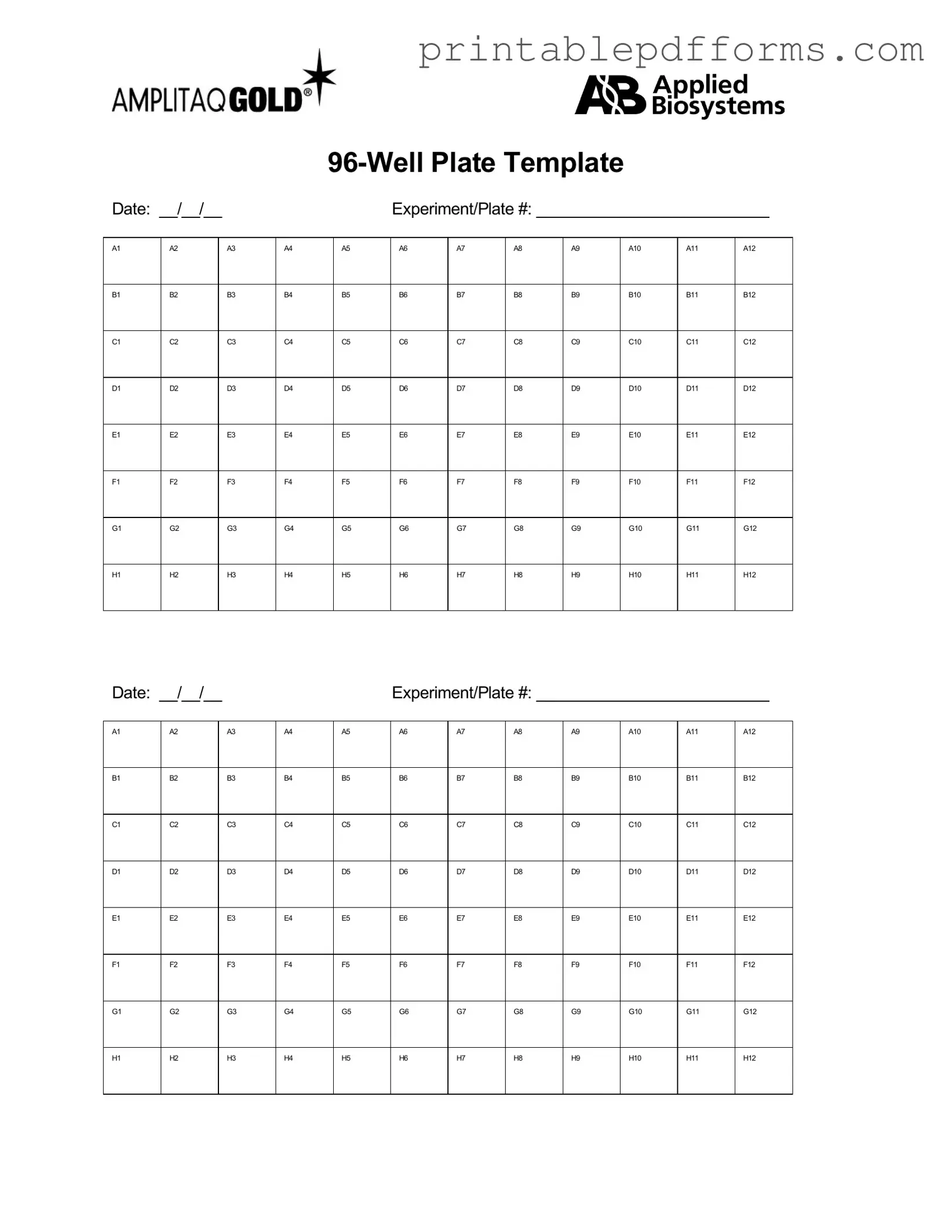The 96 Well form is used for organizing and tracking samples in a 96-well plate format. This format is commonly employed in laboratories for experiments, assays, and other scientific procedures. The form allows researchers to document sample information, including the type of sample, concentration, and any relevant notes.
To fill out the 96 Well form, follow these steps:
-
Start by entering the sample identification number in the designated field.
-
Record the type of sample in the appropriate column.
-
Indicate the concentration of each sample, if applicable.
-
Add any additional notes that may be relevant to the experiment.
Ensure that all entries are clear and legible to avoid confusion during analysis.
Yes, the 96 Well form is versatile and can be adapted for various types of assays, including enzyme-linked immunosorbent assays (ELISAs), PCR reactions, and cell culture experiments. Adjust the fields as necessary to accommodate specific requirements of the assay being conducted.
Many laboratories offer a digital version of the 96 Well form that can be filled out electronically. This version may include features such as dropdown menus for sample types and automatic calculations for concentrations. Check with your laboratory's management or data systems team for availability.
If an error occurs while filling out the 96 Well form, it is important to correct it promptly. Cross out the incorrect information neatly and write the correct information next to it. Alternatively, if using a digital version, use the editing tools provided to make the necessary changes. Always initial any corrections to maintain accountability.
To ensure accuracy, double-check all entries before finalizing the form. It may be helpful to have a colleague review the information as well. Regular training on best practices for data entry can also enhance accuracy in completing the form.
The 96 Well form is primarily intended for immediate use during experiments. For long-term storage of sample data, it is advisable to transfer the information to a secure database or electronic records system. This will help maintain the integrity of the data over time and facilitate easier access for future reference.
If questions arise regarding the 96 Well form, individuals should contact their laboratory supervisor or the designated data management personnel. They can provide guidance and clarification on proper usage and any specific protocols related to the form.

